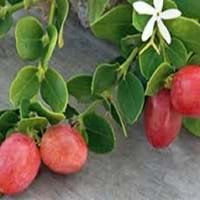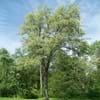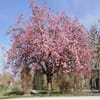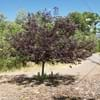Life Span
Perennial
Perennial
Origin
Western Asia
Central Asia, Southern Asia, Western Ghats, India
Types
Büttnera Czerwona, Hedelfinger Sweet Cherry
congesta, paucinervia
Habitat
Woodland Garden Canopy
Fertile bottom land, moist forests, Temperate Regions, Tropical Forests
USDA Hardiness Zone
5-8
Not Available
Sunset Zone
2a, 2b, 6, 7, 14, 15
Not Available
Habit
Upright/Erect
Upright/Erect
Flower Color
Not Available
Pale White, White
Flower Color Modifier
Bicolor
Bicolor
Fruit Color
Not Available
Purple, Black
Leaf Color in Spring
Not Available
Green
Leaf Color in Summer
Not Available
Green
Leaf Color in Fall
Not Available
Green
Leaf Color in Winter
Not Available
Light Green
Leaf Shape
broad, flat
Oval
Plant Season
Spring, Summer, Fall
Spring, Summer, Fall
Sunlight
Full Sun, Partial Sun
Full Sun, Partial Sun, Partial shade
Growth Rate
Medium
Medium
Type of Soil
Clay, Loam, Sand
Loam
The pH of Soil
Acidic, Neutral
Acidic, Neutral, Alkaline
Soil Drainage
Well drained
Well drained
Tolerances
Not Available
Drought
Where to Plant?
Ground
Ground
How to Plant?
Semi-hardwood and hardwood cuttings
Seedlings, Stem Cutting
Plant Maintenance
Medium
Medium
Watering Requirements
Water 1 in. per week during the active growing period, Water more in summer
Keep the ground moist but not water-logged
In Summer
Lots of watering
Lots of watering
In Spring
Moderate
Moderate
In Winter
Average Water
Average Water
Soil pH
Acidic, Neutral
Acidic, Neutral, Alkaline
Soil Type
Clay, Loam, Sand
Loam
Soil Drainage Capacity
Well drained
Well drained
Sun Exposure
Full Sun, Partial Sun
Full Sun, Partial Sun, Partial shade
Pruning
Remove dead branches, Remove thin branches
Prune if you want to improve plant shape, Remove dead leaves
Fertilizers
A 10 pound bag of 16-4-8 fertilizer
Compost, fertilize in growing season
Pests and Diseases
Aphids, Borers, Mites
Aphids, Earwigs, Insects, Mildew, Red blotch, Rust, sawflies
Plant Tolerance
Drought
Dry soil, Heat And Humidity
Flowers
Showy
Insignificant
Flower Petal Number
Not Available
Single
Foliage Texture
Not Available
Medium
Foliage Sheen
Not Available
Matte
Attracts
Birds, Flies
Birds, Butterflies, Fruit Bats
Allergy
Mild Allergen, Vomiting
Eczema, Mouth itching, Throat itching
Aesthetic Uses
Beautification, Used in parkland
Not Available
Beauty Benefits
Anti-ageing, Good Cleanser, Good for skin, Promotes Healthy Hair
good for lips, Remove blemishes
Environmental Uses
Air purification
Air purification, Food for animals, Food for birds, soil stabilisation
Medicinal Uses
Antitussive, Astringent, Diuretic, Tonic
Anemia, Diuretic, Potassium, Rich in Iron, Vitamin C
Part of Plant Used
Fruits, Seeds
Fruits, Leaves
Other Uses
Used for making green dye, Wood is used for making furniture
Added to salads, Cosmetics, Culinary use, Used as a nutritious food item, Used As Food, Used for its medicinal properties
Used As Indoor Plant
No
No
Used As Outdoor Plant
Yes
Yes
Garden Design
Edible, Fruit / Fruit Tree, Shade Trees, Topiary / Bonsai / Espalier
Edible, Fruit / Fruit Tree, Hedges
Botanical Name
PRUNUS avium
Carissa carandas
Common Name
Sweet Cherry
Black Currant
In Hindi
मीठी चेरी
करोंदा, कालि मैना
In German
Süße Kirsche
Carandas
In French
Cerise sucrée
karondas
In Spanish
Cereza dulce
karondas
In Greek
γλυκό κεράσι
karondas
In Portuguese
Cereja doce
karondas
In Polish
Słodka Wiśnia
karondas
In Latin
dulcis cerasus
karondas
Phylum
Magnoliophyta
Magnoliophyta
Class
Magnoliopsida
Magnoliopsida
Order
Rosales
Gentianales
Family
Rosaceae
Apocynaceae
Clade
Angiosperms, Eudicots, Rosids
Angiosperms, Asterids, Eudicots
Tribe
Amygdaleae
Not Available
Subfamily
Amygdaloideae
Not Available
Number of Species
Not Available
Not Available
Season and Care of Sweet Cherry and Karonda
Season and care of Sweet Cherry and Karonda is important to know. While considering everything about Sweet Cherry and Karonda Care, growing season is an essential factor. Sweet Cherry season is Spring, Summer and Fall and Karonda season is Spring, Summer and Fall. The type of soil for Sweet Cherry is Clay, Loam, Sand and for Karonda is Loam while the PH of soil for Sweet Cherry is Acidic, Neutral and for Karonda is Acidic, Neutral, Alkaline.
Sweet Cherry and Karonda Physical Information
Sweet Cherry and Karonda physical information is very important for comparison. Sweet Cherry height is 910.00 cm and width 760.00 cm whereas Karonda height is 120.00 cm and width 120.00 cm. The color specification of Sweet Cherry and Karonda are as follows:
Sweet Cherry flower color: Not Available
Sweet Cherry leaf color: Not Available
Karonda flower color: Pale White and White
- Karonda leaf color: Green
Care of Sweet Cherry and Karonda
Care of Sweet Cherry and Karonda include pruning, fertilizers, watering etc. Sweet Cherry pruning is done Remove dead branches and Remove thin branches and Karonda pruning is done Prune if you want to improve plant shape and Remove dead leaves. In summer Sweet Cherry needs Lots of watering and in winter, it needs Average Water. Whereas, in summer Karonda needs Lots of watering and in winter, it needs Average Water.





